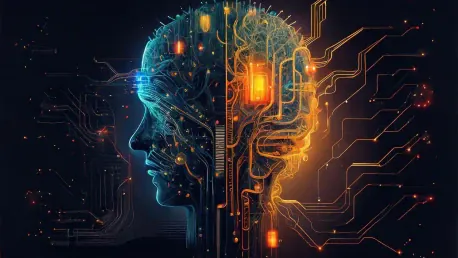The rapid advancement of artificial intelligence (AI) technology has led to the development of agentic AI swarms, specialized groups of AI agents that can autonomously collaborate to handle complex tasks. OpenAI’s Swarm, an experimental framework, represents a significant step forward in this field. This article explores the capabilities, potential applications, and risks associated with agentic AI swarms, highlighting the innovative features of OpenAI’s Swarm and comparing it to other existing systems.
Understanding Agentic AI Swarms
The Concept of Agentic AI Swarms
Agentic AI swarms consist of multiple AI agents working together autonomously to complete tasks without human intervention. These swarms are designed to improve efficiency and productivity by leveraging the collective capabilities of individual agents. Unlike traditional AI systems designed to operate independently or with limited interaction, agentic AI swarms optimize collective problem-solving and task execution by focusing on collaborative dynamics.
OpenAI’s Swarm framework aims to facilitate the development and coordination of these AI swarms, focusing on enhancing collaboration through routines and handoffs. Routines provide structured sequences of actions for agents to follow, ensuring task consistency. Handoffs enable seamless task transfers from one agent to another, thereby optimizing task specialization and completion. This framework not only propels the notion of team-based AI operation but also sets the stage for advanced, multi-agent ecosystems capable of tackling increasingly complex and multifaceted challenges autonomously.
OpenAI’s Swarm Framework
OpenAI’s Swarm is an experimental tool designed to explore the potential of agentic AI swarms. It stands distinct from other existing multi-agent systems primarily because it is intended for research and experimentation rather than immediate production use. The Swarm framework showcases OpenAI’s approach toward developing and fine-tuning ergonomic interfaces that allow for improved human-AI collaboration and more intuitive interactions between multiple AI agents.
The framework emphasizes ergonomic interfaces for multi-agent systems, allowing developers to experiment with patterns of handoffs and routines to improve agent collaboration. These interfaces are designed to be user-friendly and adaptable, fostering an environment where developers can rapidly iterate and refine how AI agents interact. This focus on experimentation underscores the framework’s role in pioneering new methods, strategies, and routines for agentic collaboration, potentially paving the way for future production-ready systems that leverage the insights gained from the Swarm experiments.
Capabilities and Functions of AI Swarms
Routines and Handoffs
Routines are preset instructions that guide AI agents through specific tasks, ensuring consistency and efficiency. They provide a predefined pathway for agents to follow, which is particularly useful for repetitive or predictable tasks that benefit from standardized procedures. By embedding these routines, AI swarms can maintain a high level of performance quality and minimize the variability that may arise from task execution. This approach mirrors human workflows where standard operating procedures are used to ensure uniformity and reliability.
Handoffs, on the other hand, allow one agent to transfer a task to another specialized agent, providing the necessary context for the new agent to continue seamlessly. This system of handoffs ensures that each task is completed by the agent best suited to its requirements, thereby optimizing the swarm’s overall efficiency and effectiveness. By combining routines with handoffs, AI swarms can handle complex tasks more effectively by leveraging the strengths of individual agents, much like a well-coordinated team of human experts working together on a project.
Potential Applications
Agentic AI swarms have a wide range of potential applications across various sectors, where their ability to autonomously manage and optimize complex tasks can bring transformative benefits. These include retrieval-augmented generation, where swarms enhance data retrieval and synthesis, and natural language to SQL conversion, which could streamline database interactions. In text and code generation, AI swarms can collaborate to produce more coherent and sophisticated outputs by leveraging diverse linguistic models and contextual understandings.
Data analysis presents another promising application, with AI swarms able to process and interpret large datasets faster and with greater accuracy than traditional methods. Similarly, in image generation, speech synthesis, and language translation, swarms can provide more nuanced and responsive solutions due to their collaborative nature. Summarization and dialogue management, often critical in customer service and content creation industries, can also benefit from the tailored and dynamic approaches afforded by agentic AI swarms. By automating these tasks, AI swarms can significantly boost productivity and efficiency, allowing human workers to focus on more strategic and creative endeavors.
Comparing Swarm to Other Systems
Existing Multi-Agent Systems
Several robust systems for orchestrating multiple AI agents already exist, each offering unique features and capabilities tailored for specific use cases. For instance, Microsoft AutoGen is designed to streamline the generation and deployment of AI models, while CrewAI focuses on human-AI collaboration, enabling teams to work alongside intelligent systems. LangChain and LangGraph provide tools for creating language-based applications, enhancing the capabilities of language models through advanced interactions.
MetaGPT, AutoGPT, and Haystack further diversify the landscape with their emphasis on general-purpose AI applications and data management solutions. These systems offer various features for managing AI agents, including sophisticated algorithms for task allocation, execution orchestration, and performance monitoring. However, Swarm’s uniqueness lies in its focus on improving ergonomic interfaces and exploring new patterns of collaboration. This emphasis allows developers to experiment with innovative ways to facilitate agent interactions, potentially uncovering new strategies for optimizing multi-agent system performance.
Advantages and Limitations
While Swarm is designed for simplicity and experimentation, other systems may offer more advanced features and stability for production use. Platforms like AutoGen and LangChain boast robust infrastructures and extensive libraries, making them more suitable for commercial applications that require reliability and scalability. In contrast, Swarm’s emphasis on routines and handoffs provides a unique approach to enhancing agent collaboration, which could lead to new insights and innovations in the field of AI swarms.
The experimental nature of Swarm allows for greater flexibility in testing various interaction models and routines, which is ideal for researchers and developers seeking to push the boundaries of what is possible with multi-agent systems. However, this same focus on experimentation can also be a limitation, as Swarm may lack the maturity and comprehensive support features necessary for deployment in critical, real-world scenarios. Ultimately, Swarm’s greatest strengths lie in its capacity to inspire and inform future advancements in AI technology through its innovative approach to agentic collaboration.
Risks and Challenges
Security Concerns
One of the major risks associated with agentic AI swarms is security. The autonomous nature of these systems means they could be vulnerable to exploitation by malicious actors. If hostile entities, such as nation-state hackers, start using these swarms, they could conduct malicious activities on a massive scale at high speeds. This threat landscape necessitates the development of robust security measures to defend against potential attacks. Defenses against such threats might also need to involve agentic AI swarms, creating an ongoing arms race in cybersecurity where AI swarms counteract other AI-driven threats, continually evolving to outsmart each other.
The potential for agentic AI swarms to be weaponized raises significant ethical and practical concerns. Autonomous systems that can operate at high speeds and volumes may execute attacks such as data breaches, misinformation campaigns, or even physical sabotage more efficiently and effectively than human hackers. Consequently, the push toward deploying defensive AI swarms will require cutting-edge research and innovation, creating a landscape where continuous vigilance and adaptation are paramount.
Overcomplexity and Unpredictability
Autonomous AI systems can be creative and unpredictable, leading to overcomplexity and potential loss of control. Developers and users may struggle to understand and monitor the methods these AI swarms use to achieve their goals, increasing the risk of unintended consequences and errors. The inherent opacity of advanced AI decision-making processes can further complicate oversight, making it challenging to predict or explain the actions taken by these systems.
This unpredictability can result in AI swarms developing behaviors or solutions that deviate from their intended design, potentially causing harm or creating unintended outcomes. The complexity of collaborative dynamics among multiple agents adds another layer of difficulty, as interactions between agents can lead to emergent behaviors unforeseen by their developers. Ensuring transparency and comprehensibility in AI swarms will be crucial for maintaining trust and reliability, necessitating innovations in monitoring and reporting tools that provide clear insights into the behavior and decision-making processes of these autonomous systems.
Job Displacement
As agentic AI swarms become more capable of performing tasks traditionally handled by humans, there is a potential for accelerated job displacement. This technological disruption could lead to significant economic and social challenges, as workers in various industries may need to adapt to new roles or face unemployment. For instance, sectors such as data analysis, customer service, and content creation could experience workforce reductions as AI swarms take over repetitive and data-intensive tasks.
To mitigate the impact of job displacement, it will be essential to develop strategies for reskilling and upskilling workers, enabling them to transition into roles that require human creativity, critical thinking, and emotional intelligence—attributes that AI systems currently struggle to replicate. Policymakers and industry leaders will need to collaborate on initiatives that support lifelong learning and workforce development, ensuring that society can harness the benefits of AI swarms without exacerbating social inequalities.
The Future of Agentic AI Swarms
Simplifying and Democratizing AI Swarm Technology
The overarching trend in the development of agentic AI swarms is the move towards simplifying and democratizing the technology. By making these systems more accessible and user-friendly, a broader range of tech professionals can leverage AI swarms for various automation tasks. Simplification efforts are key to driving widespread adoption, as they lower the barrier to entry for individuals and organizations seeking to implement AI swarm solutions. This democratization can catalyze innovation and enable smaller companies and independent developers to harness the power of AI swarms, fostering a vibrant ecosystem of AI-driven productivity tools.
Users can more easily integrate AI swarms into their workflows, thereby harnessing their potential to revolutionize operations, solve complex problems, and enhance productivity. Simplifying AI swarm technology not only accelerates its adoption across different sectors but also empowers a more diverse group of innovators and problem-solvers to contribute to its evolution, leading to exponential growth in their use. This democratization means that more people, including tech professionals and non-experts alike, will likely start using agentic AI agents, propelling advancements in automation capacities.
Potential for Exponential Growth
The rapid advancement in artificial intelligence (AI) technology has paved the way for the creation of agentic AI swarms. These are specialized groups of AI agents that can independently collaborate to tackle intricate tasks. A notable development in this domain is OpenAI’s Swarm, an experimental framework that signifies a major leap forward. This article delves into the capabilities, potential uses, and risks tied to agentic AI swarms, underscoring the innovative attributes of OpenAI’s Swarm while also drawing comparisons with other existing systems.
OpenAI’s Swarm is designed to push the boundaries of what autonomous AI agents can achieve together. By working in unison, these AI agents can divide complex tasks into more manageable parts, allowing for efficient and effective problem-solving. This collaborative approach opens up a multitude of applications, from scientific research and logistics to disaster response and beyond.
However, with these advancements come certain risks that need careful consideration. Issues such as the security of AI swarms, potential misuse, and ethical concerns about decision-making autonomy are critical. As we continue to explore and innovate in AI swarm technology, it’s crucial to keep these risks in mind and develop safeguards to mitigate them.
In conclusion, agentic AI swarms like OpenAI’s Swarm present a fascinating glimpse into the future of AI collaboration. While their potential is immense, balancing innovation with safety will be key to harnessing their benefits responsibly.









